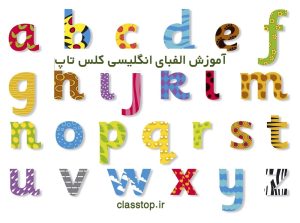The history of hand gestures
قبل از گوش کردن به فایل صوتی، تمرین زیر را انجام دهید و لغات آن را یاد بگیرید:
حالا به فایل صوتی زیر گوش دهید و تمرینات زیر را انجام دهید:
Transcript
Earlier on in today’s lecture, I mentioned the importance of hand gestures and said that I’d touch on some of these, pardon the pun! Hand gestures are, of course, often culturally bound and can vary from group to group. But there are a few of them which, if not universal, are very common indeed around the world. I’d like to focus on the history of four gestures in particular: the salute, the thumbs up, the high five and the handshake.
The salute, a gesture most associated with the military, may have originated in the 18th century. The Grenadier Guards, one of the oldest regiments of the British Army, used helmets in the form of cones. These were held in place by chinstraps. It was difficult to raise your helmet when greeting someone, so the soldiers simply touched their head with one short movement of the hand before quickly putting it back down again at their side.
The thumbs-up gesture apparently goes back a lot further. It’s widely believed that this gesture goes back to Roman times when gladiators fought in front of the emperor and eager crowds in the Colosseum. The fallen gladiator’s fate was decided by the audience. If they felt he had fought well, they showed their approval with a thumbs -up gesture. The emperor would then confirm this and thereby would spare the gladiator’s life. If the crowd gave a thumbs down, on the other hand, that meant execution.
However, there are no reliable historical references to thumbs going either up or down in the Colosseum. It may be that if the crowd wanted to spare the gladiator’s life, then they would actually cover up their thumb and keep it hidden. They would only extend their hand and thumb if they wanted the gladiator killed. This actually makes more sense, as the emperor could much more easily see what the crowd was indicating when looking out over a huge arena.
The high-five hand gesture is almost universally used as a greeting or celebration. Many see its origins in baseball. Two US teams lay claim to inventing the high five: the Los Angeles Dodgers in 1977 or the Louisville Cardinals in 1978. It’s quite likely that it was neither, and the gesture might have a much earlier origin again. It is very similar to a 1920s Jazz Age gesture known as the ‘low five’, or ‘giving skin’. This gesture involved people slapping each other’s lower hands, also in celebration. There are, in fact, numerous references to the low five in films of the era. Perhaps the high five is just an evolution of that gesture.
The final gesture I’m going to mention today is the handshake. It dates back as a greeting at least as far as Ancient Greece. In the Acropolis Museum in Athens, the base of one of the columns shows goddess Hera shaking hands with Athena, the goddess of wisdom and courage. It’s thought that shaking hands, rather than bowing or curtseying, showed both parties as equals. In 17th-century marriage portraits in Europe we find many examples of handshakes between husband and wife. Now, of course, the handshake has a multitude of uses: meeting, greeting, parting, offering congratulations, expressing gratitude or completing an agreement. In sports or other competitive activities, it is also done as a sign of good sportsmanship. In this way, the gesture has not strayed from its original meaning to convey trust, respect and equality.
Are there any other hand gestures that are common in your culture?
 کلس تاپ | آموزش و آزمون
کلس تاپ | آموزش و آزمون


















